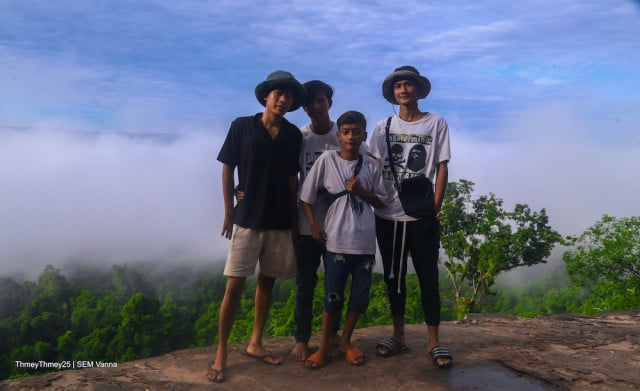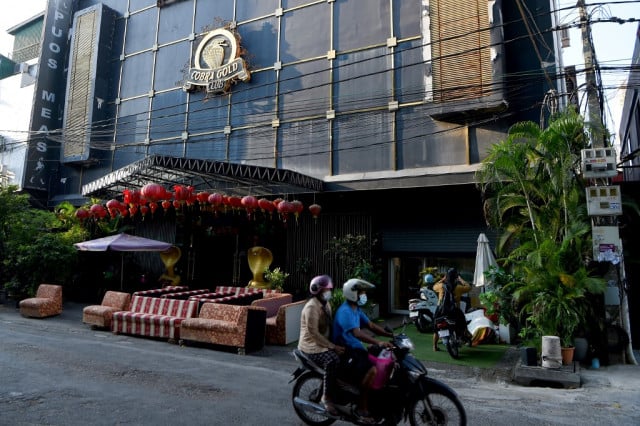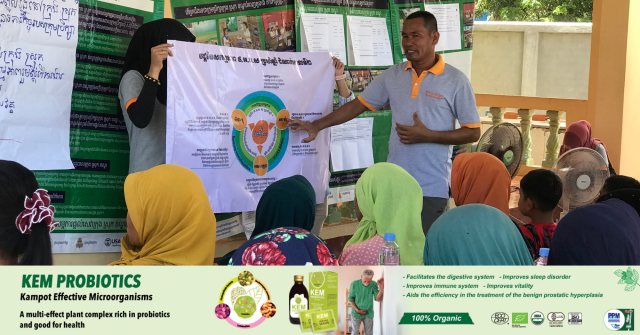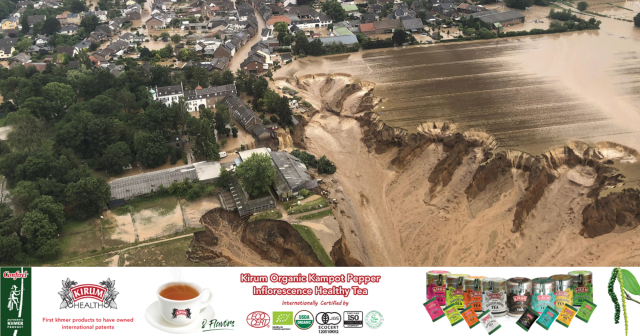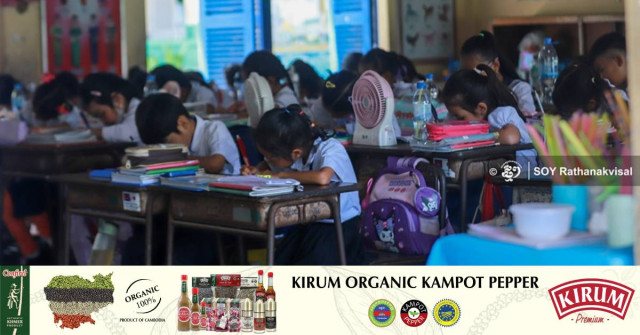Kong Nai’s Lifetime on the Art of Chapey

- By Po Sakun
- January 10, 2024 11:55 AM
PHNOM PENH – Kong Nai, one of 26 traditional art masters who were granted Living Heritage Status, has spent 64 years on Khmer classical arts, especially chapey dang veng.
The Living Heritage Status was granted to masters who developed outstanding skills in Khmer traditional arts, from dancing to music and painting.
Kong Nai specialized in singing and playing the traditional string instrument.
In 2021, Kong Nai played chapey dang veng in rapper Vannda’s song called “Time to Rise”. This song has had 118 million YouTube views.
However, Kong Nai, 80, has fallen sick, is bedridden and has had trouble perceiving notions of space and time for almost a year. In 2019, he became seriously ill but recovered after intensive care.
Due to his outstanding contribution in preserving Khmer arts since 1960, he was granted the Fukuoka Prize from Japan in 2017.
The prize was established in 1990 with the aim of honoring individuals, groups or institutions that have made outstanding contributions in the preservation and creation of a unique and diverse Asian culture that promotes cultural exchanges and raises public awareness of Asian cultural values.
Kong Nai was the third Cambodian to receive this award.
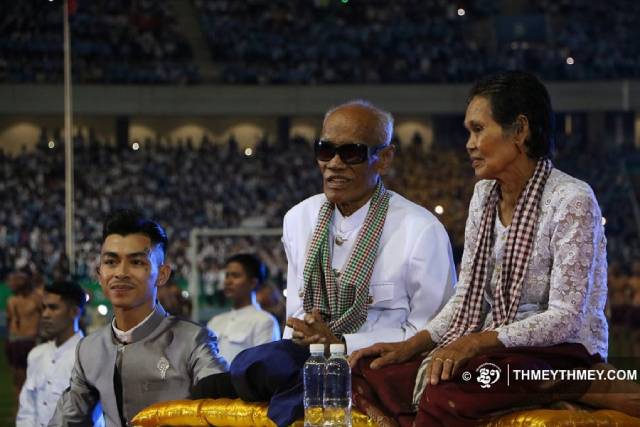 In 2021, Kong Nai played chapey dang veng in rapper Vannda’s song called “Time to Rise”. Photo: ThmeyThmey
In 2021, Kong Nai played chapey dang veng in rapper Vannda’s song called “Time to Rise”. Photo: ThmeyThmey
A Lifetime Career
Kong Nai was born in Doung village in Kampot province. He started learning chapey dang veng from his uncle when he was 13. Two years later, he could sing and play the two-string instrument.
Kong Nai, who has been visually impaired since the age of four because of smallpox, took a keen interest in playing because he could make a living from it.
Kong Nai married at the age of 18 to Tat Chen, 21. He has 10 children but only his ninth child, Kong Boran, learned how to play chapey from him.
Kong Boran recalled what his father used to tell him.
Kong Boran said one day, the villagers invited chapey dang veng players to sing at their celebrations. Once he heard, he asked his uncle to teach him how to play. However, his uncle only knew how to play, not to sing.
During the 1960s, chapey dang veng gained popularity among locals as there was not much entertainment at that time. He was invited to perform at many celebrations.
“Besides Kampot province, my father could only perform in the nearest provinces including Takeo, Kampong Speu province as he had only a bicycle at that time,” he said.
In addition to those provinces, he also used to perform at Kampuchea Krom as his house was close to the Vietnam border,” Kong Boran said.
He was paid in cash and rice and could get 10 to 15 kilos for one performance,
The Only Chapey Player in Town
Kong Nai was the only chapey dang veng expert in Kampot province so he was invited by many villagers. It was about two to four weeks before he could return home. Likewise in Takeo province, only Prach Chhuon specialized in the art of Chapey that time.
Singing songs with chapey was often performed during birthday celebrations, Kathin ceremonies and pagoda flower festivals. At that time, singing started from 10pm after the monks chanted until 5am.
Boran said people of all ages came and enjoyed the performances as there were not many performances back then.
 Kong Nai specialized in singing and playing the traditional string instrument. Photo: ThmeyThmey
Kong Nai specialized in singing and playing the traditional string instrument. Photo: ThmeyThmey
Kong Nai Endured His Life During Khmer Rouge Regime
During the Khmer Rouge regime, he was asked by Khmer Rouge cadres to cut the branches of palm trees to make cow ropes. Due to his blindness, he was not able to work as quickly as others. One day, those cadres were about to kill him.
“He was about to be killed that night. Fortunately, one of his children was hurt when he stepped on a piece of glass so he took one day’s leave from his work. That night, the Liberation Army entered and he was able to survive.
No one in our family died during the Khmer Rouge regime. We have lived together until now,” Boran said.
Life After the Khmer Rouge
After the Khmer Rouge, people lived in poverty so he was not invited to perform as before. They had no choice, so his wife worked at farm fields while he was taking care of the children at home. One year later, he was able to perform again when his eldest son drove him.
In 1992, he worked in the Ministry of Culture and Fine Arts and his wife drove him to work. Only he and his wife came to Phnom Penh, leaving their children at home. From 1993 to 1994, his two daughters came to Phnom Penh to help sell sweets with their mom to generate more income.
Boran said his father did not dare to bring all his children along with him to Phnom Penh as the Khmer Rouge had just ended, so he feared incidents happening like before.
“When my father arrived in Phnom Penh, his salary was low,” Boran said. “My sisters and mom helped to earn extra income.”
From 2003, after Cambodian Living Arts helped him to become the master of Chapey dang veng, he received another salary from the organization. After that, he could perform more both in the country and abroad.
He used to performed in Thailand, Vietnam, Japan, France, the United States, the United Kingdom and Poland via organizations and government institutions.
So far, Kong Nai has taught about 10 students in person, including students in Phnom Penh and in his hometown. Some stayed with him until they could sing and play but others dropped out along the way.
Teaching Chapey dang veng has been posted on YouTube and Facebook, where young people can learn online.
Kong Nai always tells students and the public to help preserve the art of Chapey dang veng.
Originally written in Khmer for ThmeyThmey, this story was translated by Rin Ousa for Cambodianess.






